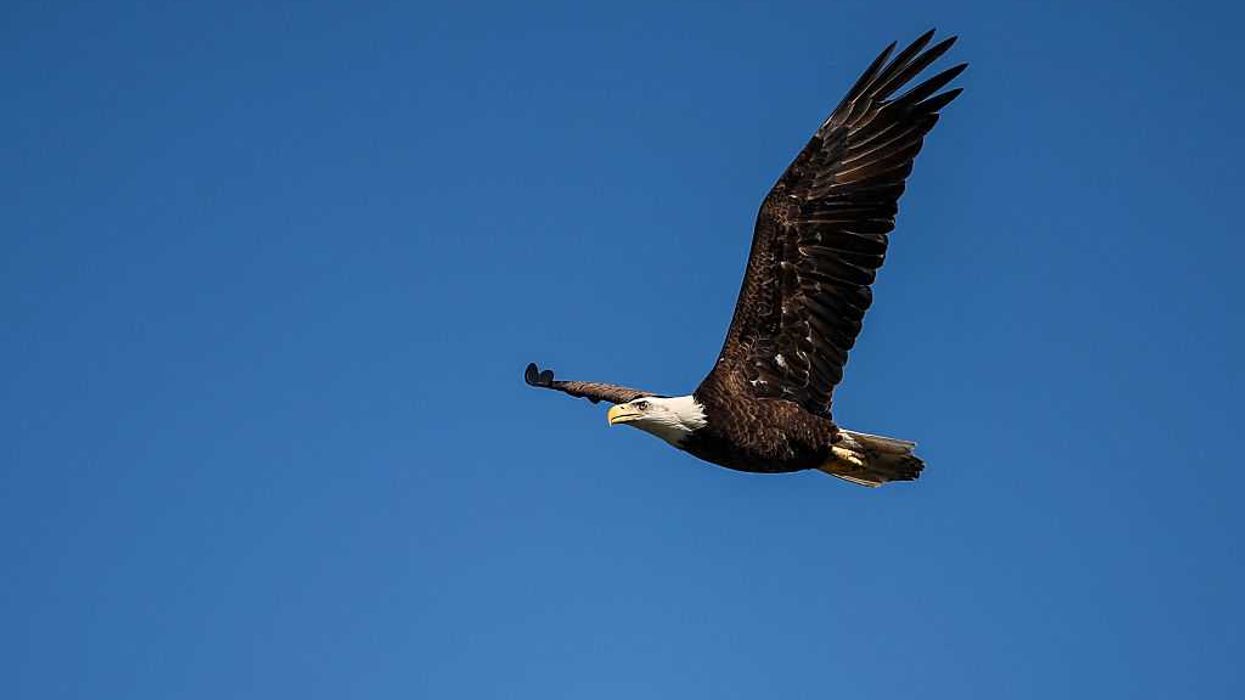Gorrell is an advocate for the deaf’s rights, a former Republican Party election statistician, and a longtime congressional aide.
Last week, the Ohio Ballot Board finalized the language of Issue 1, a constitutional amendment dealing with how the state’s political boundary maps are drawn.
The media has described the amendment as follows:
- A “yes” on Issue 1 is a vote to empower citizens and put politicians on the sidelines.
- A “yes” vote supports giving the power of the pen to citizens; a “no” vote means keeping the redistricting system the way it is.
- A "yes" vote backs ending the decades-long gerrymandering of political districts.
- If you vote yes on Issue 1, you agree to change how Ohio's districts are drawn.
But what does the amendment really say?
A seemingly simple question, but according to a readability test done on Grammarly, understanding the ballot language likely requires at least some college education.
This brings to mind a 2018 Supreme Court session on the Maryland redistricting case, Benisek v. Lamone. I attended in person as the justices adjudicated the question of whether amendment language is transparent and clear.
This was a crucial moment in the battle against gerrymandering, which distorts the democratic process by manipulating electoral boundaries. Chief Justice John Roberts raised the issue of the ballot question's “opacity,” highlighting the vital role of clear and transparent ballot language in preserving the democratic process.
Justice Stephen Breyer quoted the actual question: “Are you for or are you against the following text: Establishes the boundaries for the State’s eight United States congressional districts based on recent Census figures, as required by the United States Constitution?”
He then pointed out, “It doesn’t even tell you what establishes it.” This lack of clarity in the ballot language is not just a potential issue but a significant concern that could lead to substantial confusion and possible misinterpretation.
Afterward, Maryland Del. Neil Parriott (R), who engineered the referendum's inclusion on the ballot, exclaimed, “The U.S. Supreme Court agreed with my initial assessment that the ballot question was unfair.”
For instance, a more transparent and easily understandable version of the ballot question could be: “Do you support the proposed changes to the boundaries of the State's eight United States congressional districts based on the most recent Census figures, as required by the United States Constitution?” This example underscores the urgent need for legislative changes to ensure clear and easily understandable ballot language.
The exact wording of the Maryland redistricting referendum, Question 5 on the 2012 statewide ballot, read:
“Congressional Districting Plan: Establishes the boundaries for the State’s eight United States Congressional Districts based on recent census figures, as required by the United States Constitution.”
This measure, which passed with the support of 64 percent of the voters, underscores the profound impact of unclear ballot language.
One can't help but wonder if most of the “yes” voters truly understood the meaning of the 23-word sentence. Did these same voters know that the editorial boards of The Baltimore Sun, the Annapolis Capital, the Carroll County Times, The Gazette, The Washington Post, the Washington Examiner and Washington Jewish Week urged voters to vote “no”?
Ten months after the Supreme Court, Maryland state Sen. Cheryl Kagan (D) introduced Senate Bill 56, requiring that a ballot question be written in plain language reasonably calculated to be understood by an individual who has attained no higher than a 6th grade level of reading comprehension.
If Kagan’s legislative proposal had been enacted in 2012 or earlier, the language of the Question 5 ballot could have been changed to the following:
- A “yes” vote supports the state legislature’s redistricting plan for the boundaries of the state’s eight U.S. Congressional Districts.
- A “no” vote opposes the state legislature’s redistricting plan for the boundaries of the state’s eight U.S. Congressional Districts.
Kagan’s bill passed on the Senate floor, but the House committee canceled its hearing. Two months ago, Gov. Wes Moore (D) took a step forward by signing an executive order creating the Maryland Plain Language Initiative.
Last year, California Gov. Gavin Newsom (D) signed Assembly Bill 421 into law to simplify the language for ballot referendums. Under the old law, a referendum required voters to vote “yes” to oppose repealing a law. On the other hand, a “no” vote meant that they supported the referendum. For example, when voters considered a 2008 ballot measure that proposed a state constitutional amendment to ban gay marriage, voting “no” on the measure meant voting “yes” on gay marriage while voting “yes” meant disallowing gay marriage. This measure passed with 52 percent, outlaw gay marriage. Both supporters and opponents realized those who supported their side would vote wrong, indicating the confusion caused by unclear language!
“There are not many states that have something as clear as this,” Kagan said. “It's very explicit about it being the language on the ballot, rather than just information about the ballot.” She has encouraged the Maryland Board of Elections to accept guidelines regarding compliance with the federal Plain Writing Act of 2010, which requires federal agencies to write “clear government communication that the public can understand and use.”
Twenty-two states have enacted plain language laws for ballot measures, according to Ballotpedia.
Returning to Ohio, the proposed amendment aims to end partisan gerrymandering. However, the adopted ballot language could potentially mislead voters, as it states that the amendment would “[e]stablish a new taxpayer-funded commission of appointees required to gerrymander the boundaries of state legislative and congressional districts to favor the two largest political parties in Ohio.
The word “gerrymander” could mislead voters. However, Ohioans have consistently voted against gerrymandering in the past two referendums on redistricting reforms: a 2015 measure, with 71 percent voting in favor, and a 2018 measure, with 74 percent voting in favor. Those results indicate a clear public stance against gerrymandering. The potential for misunderstanding due to unclear language is a serious issue that needs to be addressed.
This example further underscores the need for clear and easily understandable ballot language in all 50 states to ensure a fair and transparent democratic process.





















